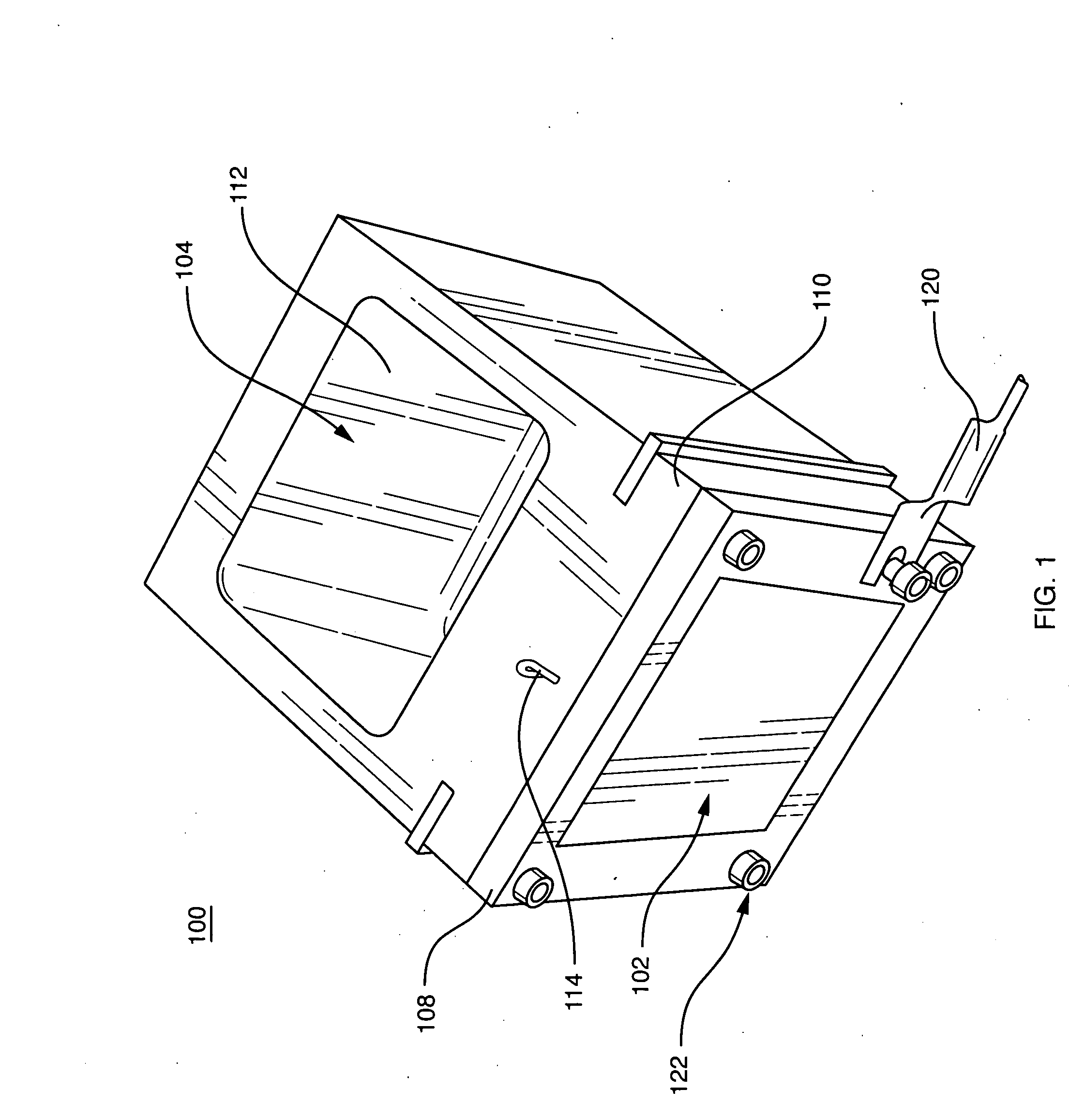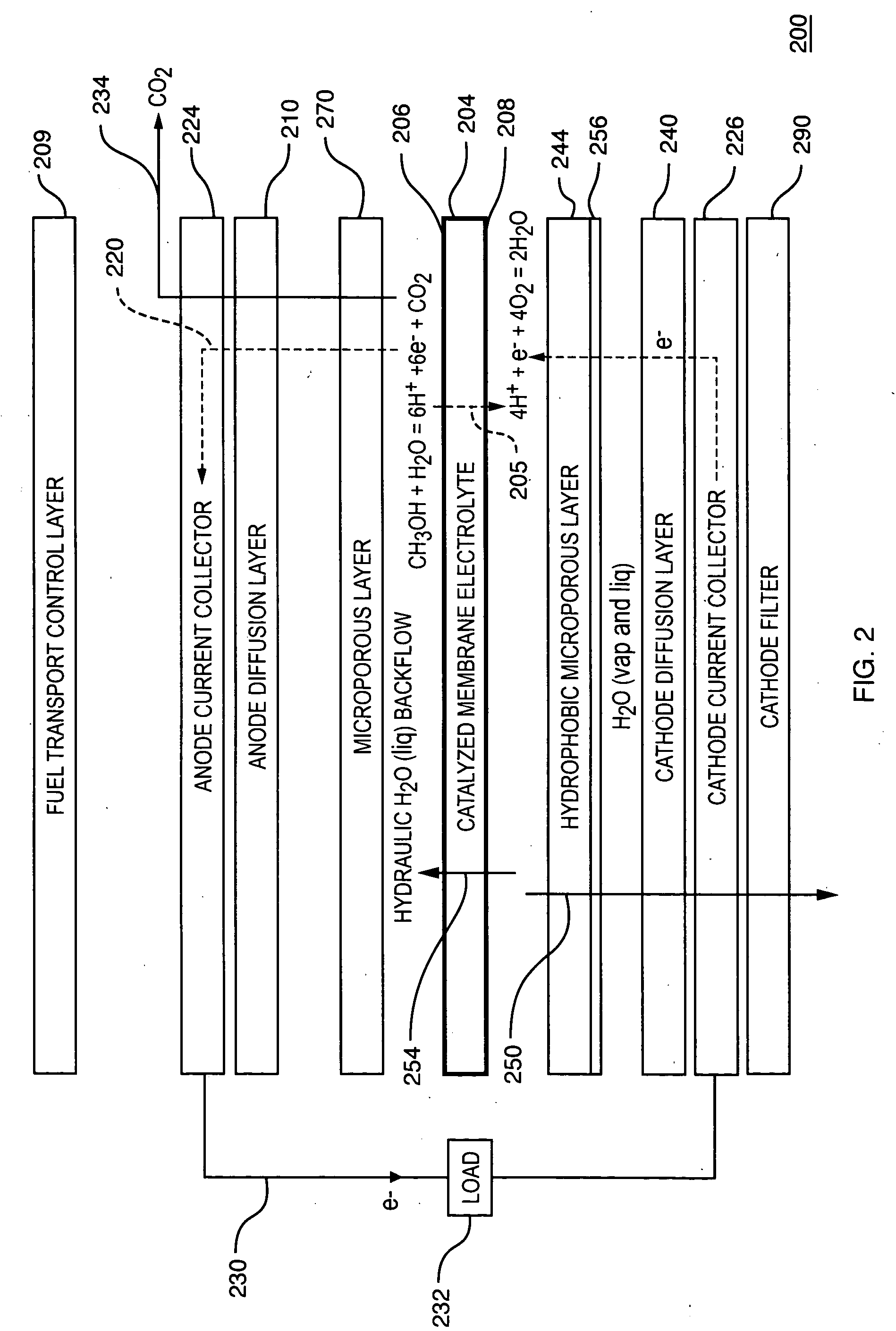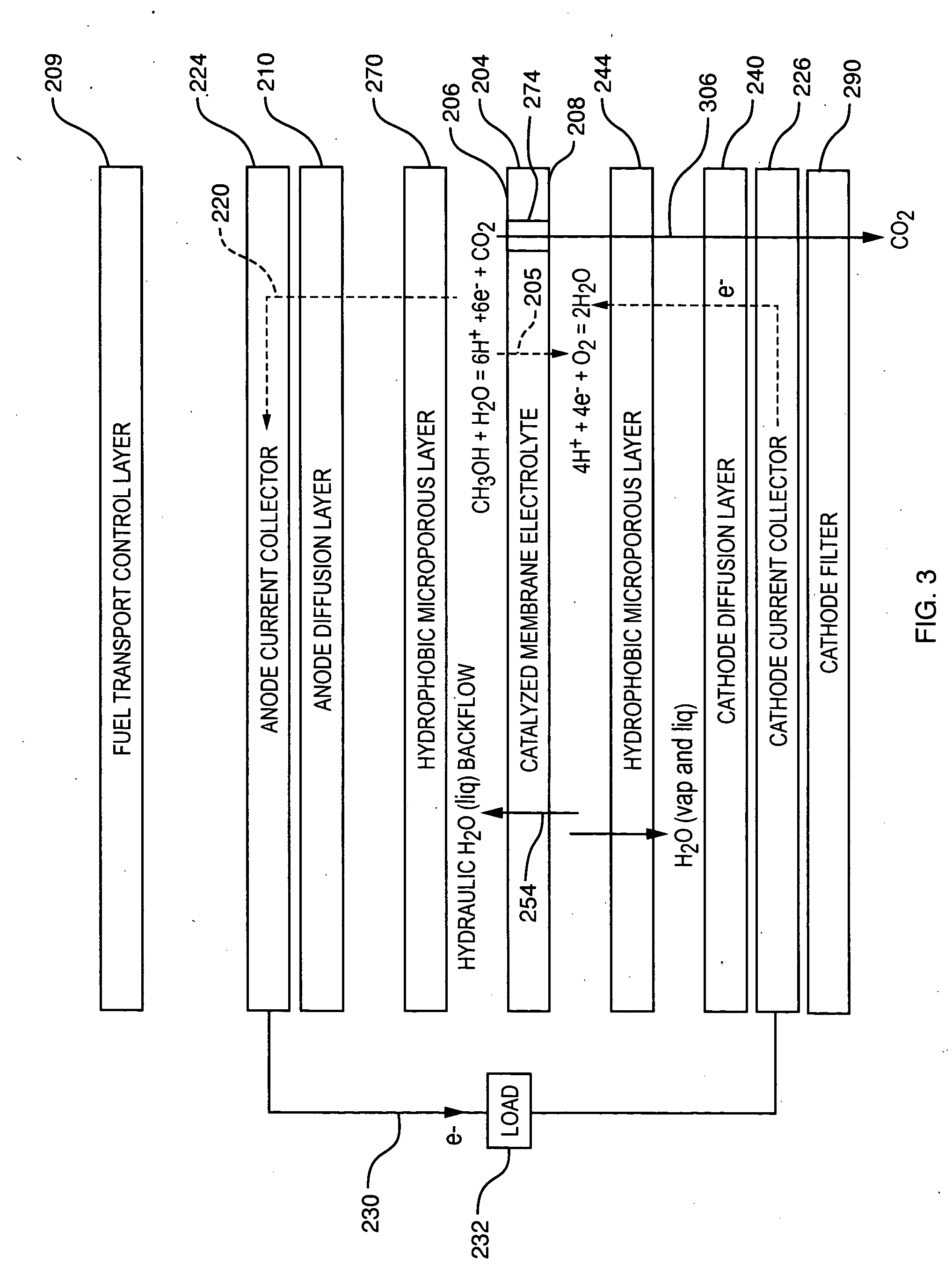Controlled direct liquid injection vapor feed for a DMFC
a technology of direct oxidation fuel cells and liquid injection vapor feed, which is applied in the direction of fuel cell details, cell components, electrochemical generators, etc., can solve the problems of high power applications, difficult to provide in a tightly volume-limited dmfc technology platform, and limited reformer based systems. , to achieve the effect of simple and effective carbon dioxide releas
- Summary
- Abstract
- Description
- Claims
- Application Information
AI Technical Summary
Benefits of technology
Problems solved by technology
Method used
Image
Examples
Embodiment Construction
[0050]FIG. 1 illustrates a direct oxidation fuel cell system 100 that includes a direct oxidation fuel cell 102 in conjunction with a fuel reservoir 104. The fuel cell 102 is held together by a frame 108 and it is encapsulated within a plastic exterior housing 110, which may be comprised of a plastic. The fuel reservoir 104 has a recess 112 into which fuel or a fuel cartridge is inserted to begin the delivery of fuel to the anode portion of the fuel cell as will be discussed in further detail hereinafter. The anode portion of the fuel cell has no liquid outlet. In FIG. 1, the active surface of the cathode is located on the aspect corresponding to the front face of the cell as shown. The anode current collection lead 114 is in ohmic contact with the anode current collector (hidden in FIG. 1) and can be connected with the cathode current collector lead 120 to form an electrical circuit and a load can be connected across the leads 114 and 120 to utilize the electricity produced by the ...
PUM
| Property | Measurement | Unit |
|---|---|---|
| thickness | aaaaa | aaaaa |
| thicknesses | aaaaa | aaaaa |
| thick | aaaaa | aaaaa |
Abstract
Description
Claims
Application Information
 Login to View More
Login to View More - R&D
- Intellectual Property
- Life Sciences
- Materials
- Tech Scout
- Unparalleled Data Quality
- Higher Quality Content
- 60% Fewer Hallucinations
Browse by: Latest US Patents, China's latest patents, Technical Efficacy Thesaurus, Application Domain, Technology Topic, Popular Technical Reports.
© 2025 PatSnap. All rights reserved.Legal|Privacy policy|Modern Slavery Act Transparency Statement|Sitemap|About US| Contact US: help@patsnap.com



